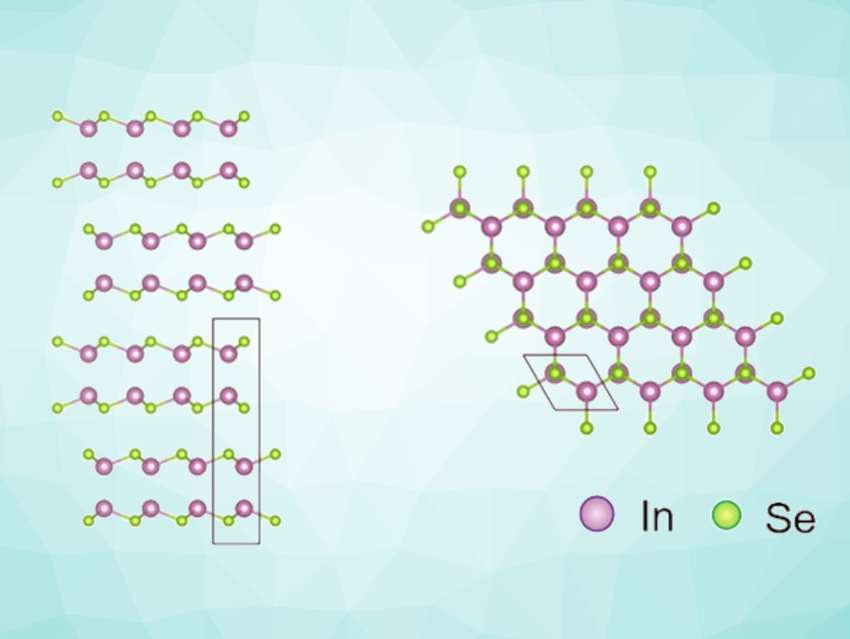Thermoelectric materials can enable the conversion between heat and electricity, with advantages like small device sizes and high reliability. They could have applications, e.g., in waste-heat recovery or self-powered electronic devices. InSe (structure pictured), for example, can be considered a potential thermoelectric material with suitable properties for applications in flexible and wearable thermoelectric devices.
Yu Xiao, Li-Dong Zhao, Beihang University, Beijing, China, and colleagues have systematically investigated the carrier and phonon (a quasiparticle derived from the vibrations of atoms in a solid) transport properties in n-type InSe. The team found a dynamic, temperature-dependent carrier concentration that stems from the possibility of valence fluctuation between In+ and In3+ in InSe. According to the researchers, with thermal activation, the In+ state in InSe can change to an In3+ state and release two free charge carriers. Manipulating the valence state of indium further, e.g., by replacing Se with the more electronegative S, can induce more In3+ states, increase the carrier concentration, and further optimize the thermoelectric properties of InSe.
The exceptional dynamic carrier transport properties and intrinsic low thermal conductivity suggest InSe could be a promising thermoelectric material. Its thermoelectric performance could be further enhanced, e.g., by halogen doping or by growing high-quality InSe single crystals to boost carrier mobility. This work highlights the potential thermoelectric performance of InSe and provides an effective strategy for its optimization.
- Dynamic carrier transports and low thermal conductivity in n‐type layered InSe thermoelectrics,
Haonan Shi, Dongyang Wang, Yu Xiao, Li‐Dong Zhao,
Aggregate 2021.
https://doi.org/10.1002/agt2.92



